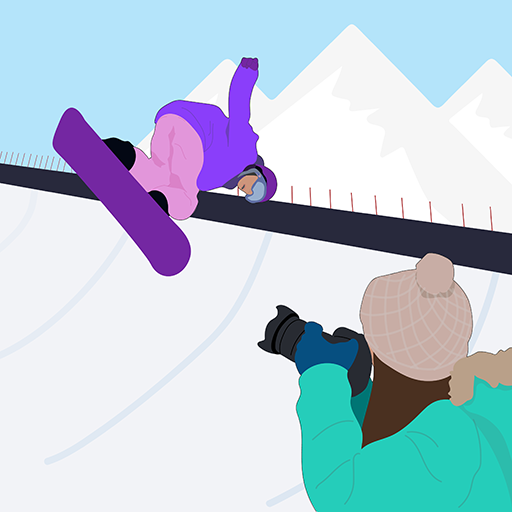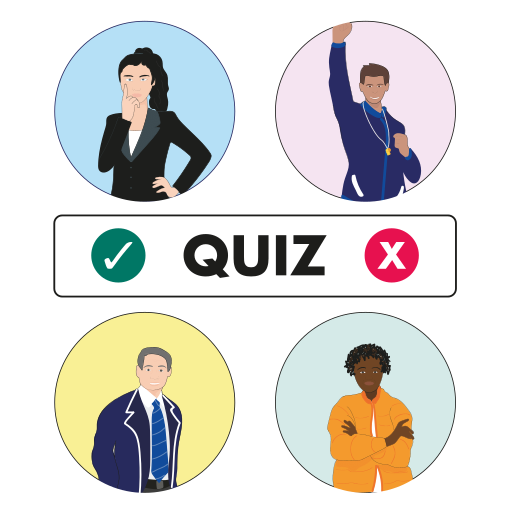Use 'Print preview' to check the number of pages and printer settings.
Print functionality varies between browsers.
Printable page generated Sunday, 23 November 2025, 9:33 AM
Session 4 Understanding risk
4.1 Introduction
In this session, you will explore how to identify, prevent, and minimise safeguarding risks. You will also consider the main parts of a safer recruitment process and how this can help manage risk. The final part explores how risks in the ‘digital’ world can be minimised.
Learning outcomes
By the end of this session, you will have a better understanding of:
How assessing and managing risk is an important preventative measure in safeguarding. |
Risk factors within your organisation, by identifying all the ways in which children and vulnerable adults are involved in your sport. |
The benefits and main parts of a safer recruitment process. |
Risks in the |
4.2 How and where are children involved in your organisation?
Although safeguarding is there to protect everyone, it is often helpful to think about children as they can be more vulnerable.
By answering the question of where children are involved in your organisation, you can start to identify and minimise the risks anyone can face.
This is the first step towards developing a comprehensive safeguarding approach. Let’s think about how and where children are involved.
 List the ways children are involved in your organisation’s activities
List the ways children are involved in your organisation’s activities
Make a list of all the situations or activities where children are involved in your organisation. Include face-to-face and online activities. To help you start, we've added a few examples in the face-to-face column.
| Face-to-face | Online |
|---|---|
| As athletes in weekly training. | |
| Attending competitions or training camps that include overnight stays away from home. | |
| Receiving medical treatment (e.g. physiotherapy or sports psychology sessions). | |
Comment
How many did you identify? Here are some we thought about – do any of these situations or activities match yours? Did you come up with any we didn’t?
| Face-to-face | Online |
|---|---|
| Competitions or training sessions held in public facilities (outdoor and indoor facilities). | Social media. |
| Strength, conditioning, and gym sessions. | Communication using email, text, or messaging apps. |
| Travelling to and from competitions or training camps. | Online coaching. |
| Staying in residential accommodation including in village and school halls. | Children’s information, performance data, and images held and used online. |
| Changing, showering, and toilet facilities. | Use of e-sport platforms and/or video gaming, including chat functions. |
| Attending education/teaching sessions. | Use of apps popular with children. |
| As coaches, officials, or in other roles. | |
| As spectators. | |
| Disability sport for child athletes. | |
| Children’s involvement in activities and events with funders, sponsors, or the media. |
You might find it surprising just how many diverse circumstances exist.
Each situation carries safeguarding risks when it comes to interactions or involvement with children. Some of these are common to every situation – for example, risks posed by people who may wish to abuse children, or the potential for poor equipment or facilities to harm children.
Identifying these risks will help you understand where action is needed.
4.3 Risk assessment as a preventative tool
A safeguarding
The person who completes a risk assessment needs in-depth knowledge of:
- The local context and the organisation.
- The specific activity or activities.
- The potential safeguarding risks that can arise within sport.
A safeguarding risk assessment should not be a one-time activity. Risk assessment is an ongoing process that helps to:
- Identify ways or circumstances in which children and others may be abused.
- Develop a plan to remove or reduce the risk.
- Monitor the
mitigation of these risks (ideally) until they are eliminated.
Organisational risk assessments should be reviewed and updated regularly (at least once a year), whereas activity level risk assessments should be completed before each activity or event and then reassessed afterwards for learning.
4.4 Starting to identify activity level safeguarding risks
Everyone involved in sport has a responsibility to think about how the activities they are involved in might present a safeguarding risk, and to act to minimise any risks that are identified.
 Identify the safeguarding risks in sport: four examples
Identify the safeguarding risks in sport: four examples
Think about the safeguarding risks involved through sport in the following four examples.
- Children staying at a residential training camp.
- Detailed information about child athletes featured on your organisation’s website.
- Transporting groups of children to an international tournament.
- An individual athlete travelling alone to global competitions with a coach of a different gender.
List as many different types of risk or safeguarding issues that each situation may introduce:
| Children staying at a residential training camp |
|---|
| Detailed information about child athletes featured on your organisation’s website |
| Transporting groups of children to an international tournament |
| An individual athlete travelling alone with a coach of a different gender to competitions around the world |
Comment
Were you able to come up with a range of safeguarding risks or issues for each? Here are our examples – do these risks or issues match yours? Did you think of any additional points?
| Children staying at a residential training camp |
|---|
| The condition of the accommodation, e.g. cleanliness, sleeping arrangements, meals, privacy issues, and safety/security issues. |
| Staff being only focused on performance and not caring about children’s needs, e.g. emotional state. |
| Inadequate supervision of children during free (non-training/playing) time. |
| Unaccompanied children able to leave the venue. |
| Children away from family and usual support network. |
| Children being forced into initiation or ‘hazing’ rituals that are harmful. |
| Detailed information about child athletes featured on your organisation’s website |
| Detailed personal information and images allows children to be identified, groomed, or contacted by potential abusers. |
| Children can be subjected to unwanted or abusive online comments and ‘trolls’. |
| Children are placed in the public eye without their or their parent’s consent, adequate preparation, guidance, and protection. |
| Transporting groups of children to an international tournament |
| Pick up and drop off measures are unclear or change – leaving children waiting alone. |
| Vehicles are not roadworthy. |
| Drivers are not qualified or experienced and have no licence or insurance. |
| Inadequate supervision of children on the journey leads to bullying or dangerous misbehaviour. |
| Children not speaking the language of the host country. |
| Children being dependent on others for money, for food, travel arrangements, etc. |
| An individual athlete travelling alone with a coach of a different gender, to competitions around the world |
| May not feel comfortable discussing certain health issues with coach of a different gender. |
| May be less likely to raise concerns or |
| Danger of sexual harassment or abuse. |
This exercise shows how your organisation can begin to record where safeguarding measures are needed or need to be strengthened. Over time your organisation’s safeguarding
| Why is identifying risks an important step? |
A comprehensive approach to safeguarding means putting in place a range of measures to address and minimise all risks. Identifying and managing risks helps to prevent harm. |
In addition to identifying risk, another important step is understanding what safeguards already exist in your organisation – and one part of this is how people are recruited.
4.5 Risk reduction measures in action: safer recruitment
There are a number of actions an organisation can take to mitigate the risks identified in the previous section. We think one measure, safer recruitment, is worthy of particular attention.
What is meant by safer recruitment?
Sport relies on thousands of well-motivated staff and volunteers. Without them, many sports organisations, activities, and events would not exist.
In order to attract the right staff and volunteers, it is essential that organisations have effective recruitment and selection procedures.
Safer recruitment refers to processes that organisations can put into place to prevent or deter unsuitable individuals from taking up roles that provide access to potential victims. It is a way to make sure that people have the right skills, knowledge and attitude for the role(s) you are looking to recruit them for.
Safer recruitment is one of the core safeguarding building blocks – and protects the gateway to your organisation. The same procedures should be adopted whether staff are paid or unpaid, full time or part time.
Prevent people who wish to harm children from getting into your organisation. It is much better – and easier – to use a safer recruitment process to prevent an unsuitable person getting into your organisation than it is to remove them once concerns arise. |
 What are the benefits of having a safer recruitment process?
What are the benefits of having a safer recruitment process?
Think about the benefits of safer recruitment to the following groups, then select each tile to reveal our thoughts.
4.6 What are the minimum requirements for safer recruitment?
As a minimum, safer recruitment should include:
- Providing a job description, which details all the tasks involved in the role, including any responsibility for children.
- Undertaking an interview, including questions to assess candidate suitability, previous work with, and attitudes towards children.
- Taking up references from previous employers or people who know the candidate well, including speaking to them directly to verify the reference.
- Obtaining a police or criminal records check (where this is available) and a ‘self-declaration’ – where you ask the candidate to state and sign whether they have been involved in any safeguarding incidents in the past.
- Induction when they start in the role to make sure they understand safeguarding policy and procedures.
- Having privacy notices in place for dealing with processing sensitive personal data, like criminal convictions, in an application.
Gather and assess all candidate information
All relevant information (from the application form, interview, references, and police checks) should be collated and assessed by someone with good safeguarding knowledge. This is what is meant by ‘screening’.
All information about the candidate and the interview should be recorded and stored safely until either a decision is made not to hire the candidate, or the employment is terminated.
Beyond recruitment, a further set of risks occurs online. In the next section, you will begin to identify the risks associated with the digital world.
4.7 Risk reduction measures in action: the digital world
The digital world refers to ways that individuals and organisations communicate and interact using electronic and online technologies. Digital activities include receiving and/or posting information, photographs and videos, as well as communicating with other people or groups through written messages or live audio or video chat.
Digital (or ‘online’) activity involves the use of mobile phones, computers, tablets, or other internet-enabled devices. It includes using social media platforms, websites, video conferencing solutions, and messaging apps. Some online games also enable players to interact with each other and share messages.
Let’s think about some common examples of digital activities. Select each tile to reveal the type of interaction.
There are a number of safeguarding risks that exist across these different platforms which you need to be aware of. You are asked to think about some of these next.
 List the risks connected with the misuse of digital tools
List the risks connected with the misuse of digital tools
Make a list of all the risks you can think of. To help you, here are a couple of examples:
| Being bullied by peers (cyber-bullying) – including name-calling, insults, and threats linked to, for example, their appearance or achievements. |
| The misuse of personal information shared online – this includes accessing and re-posting information (text or images) without consent, identity theft, or posting images online that are intended to humiliate or embarrass the subject. |
Comment
Here are some we came up with – it is a broad list of risks:
| Grooming for sexual abuse – abusers can use online platforms to pretend to be someone else, for example, another child. They can use the online world to build a secret trusting relationship with a child or vulnerable adult to abuse them. The abuse itself may happen completely online or the abuser may arrange to meet the person. |
| Grooming for financial abuse – often the grooming process for sports corruption, match manipulation, or financial exploitation of athletes can start online. |
| Trolling – athletes, particularly those who are well known, may be vulnerable to negative social media comments – sometimes known as |
| Harassment of children by adults – for example, negative comments about their sporting behaviour or achievements by adults (parents, coaches, or others). |
| Sexual abuse and exploitation – for example, sexting (being encouraged, tricked, or coerced into creating, sharing, and receiving sexual images) or being shown inappropriate sexual material as a way to normalise it. Or being forced into more inappropriate sexual acts by the threat of previously recorded images being shared online. |
| Exposure to potentially harmful or misleading content – for example, pornographic, racist, or other hate materials that might encourage users to harm themselves or others, or misleading content (e.g. unrealistic body images leading to self-harm, depression, and eating disorders). |
| Impact on mental health – the overuse of digital activities can lead to a lack of sleep and meaningful rest and/or mental health issues. |
All these experiences are potentially emotionally damaging and can impact an individual negatively. Just like abuse that happens face to face, online abusers could be other children or adults who are known to the victim, or strangers.
People can experience serious abuse online without ever meeting the person abusing them face to face. The impact and trauma experienced by those targeted and abused online is as devastating as for any form of offline bullying. |
Next, you are going to think about how the use and misuse of images in sport can create the risk of abuse.
4.8 The use and misuse of images of children in sport
Images and videos of children and adults in sport play an important, legitimate, and positive role: for parents who want to record their children’s successes; for coaches who may want to use them to improve the teams’ performance; and for organisations that want to promote and celebrate their programmes and activities.
However, images like these can be shared very easily, and can be misused, so care needs to be taken to avoid potential
In this section, you will think about safeguarding considerations in producing, using, and storing images (photographs and videos), particularly of children.
What are the main risks in sharing players’ images?
Click on each statement below to read more information.
It is important to note that anyone connected with your sport may ‘overshare’ images – parents, and even children themselves, can overshare without realising the risks.
| Responding to concerns about photography |
All staff, volunteers, children, and parents should be informed about the potential risks of sharing visual content and that they should report to the organisation if they have any concerns regarding visual content. There must be a procedure in place to ensure that reported concerns are dealt with in the same way as any other safeguarding issue. |
4.9 Summary of Session 4
Congratulations, you are now halfway through this course. There are many important and interesting topics ahead.
| The main learning and messages from this session are: |
|
In the next session, you will cover policies, procedures, and codes of conduct and their key role in safeguarding.
4.10 Course Quiz 1
Now it’s time to complete Course quiz 1 – it’s a great way to check your understanding of the course content so far.
This quiz contains 16 questions and a pass mark of 70% and above is required to obtain your digital badge and course certificate.
You can review the answers you gave, and which were correct/incorrect, after each attempt has been completed.
If you don’t pass the quiz at the first attempt, you are allowed as many attempts as you need to pass. There is a 24-hour delay between each attempt to allow you time to look back at the course content again.







